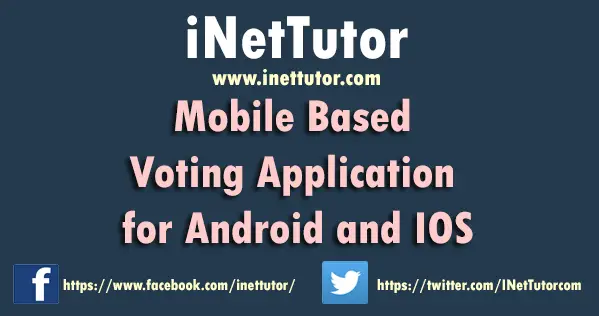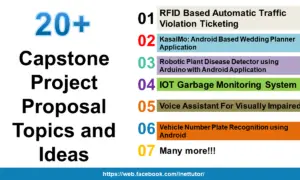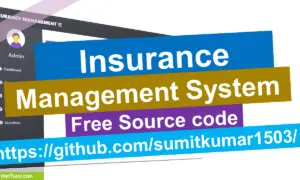Legal Tech and RegTech Project Ideas
Introduction
Table of Contents
Legal document analysis is a critical task in the legal industry, but it comes with several challenges. Reviewing complex contracts and agreements manually is time-consuming and prone to errors. Missing important clauses or misinterpreting legal terms can lead to serious consequences, including legal disputes and compliance issues.
Accurate and efficient legal document review is essential to mitigate risks and ensure that all contractual obligations are met. However, the traditional manual review process often struggles to keep up with the growing volume and complexity of legal documents.
Manual document review involves various complexities and risks. Human errors such as overlooked clauses, incorrect interpretations, and compliance gaps are common issues. These mistakes can lead to misunderstandings, legal disputes, and financial penalties, making the review process both inefficient and costly.
The goal of this project is to develop an AI-driven tool that automates the analysis of legal documents. This solution aims to enhance the accuracy of legal reviews while significantly reducing the time and resources required for manual document examination. By leveraging artificial intelligence, the tool will help legal professionals identify potential risks, ensure compliance, and streamline their workflows, ultimately improving overall efficiency and effectiveness in legal document management.
Technology Stack
Here is a list of development tools and technologies that can be used for building an AI-based legal document analysis tool:
Programming Languages
- Python: Widely used for developing AI and NLP models due to its extensive libraries and frameworks.
- JavaScript: Useful for frontend development and integration with backend services.
Natural Language Processing (NLP) Libraries
- SpaCy: An industrial-strength NLP library with support for entity recognition, dependency parsing, and more.
- NLTK (Natural Language Toolkit): A suite of libraries for working with human language data.
- Transformers (Hugging Face): For using pre-trained language models like BERT, GPT, etc., which are excellent for advanced NLP tasks.
- Stanford NLP: Offers pre-trained models and tools for NLP tasks like tokenization and named entity recognition.
Machine Learning Frameworks
- TensorFlow: An open-source framework for machine learning and deep learning model development.
- PyTorch: A flexible deep learning library used for developing NLP and AI models.
- scikit-learn: Useful for traditional machine learning tasks like classification, clustering, and regression.
Data Storage and Database Management
- PostgreSQL: A powerful, open-source relational database system for storing document data and analysis results.
- MongoDB: A NoSQL database suitable for storing large volumes of unstructured legal document data.
- Elasticsearch: For indexing and searching through large sets of document data efficiently.
Development Frameworks and Libraries
- Django: A high-level Python web framework for rapid development and clean, pragmatic design.
- Flask: A lightweight Python web framework, suitable for building microservices and APIs.
- Node.js: A JavaScript runtime used for building scalable network applications and APIs.
Document Parsing and Analysis
- Apache Tika: For extracting text and metadata from various file types like PDFs, DOCX, etc.
- PDFMiner: A tool for extracting information from PDF documents.
- PyPDF2: A library for manipulating and reading PDF files.
Cloud Platforms and Services
- AWS Comprehend: A natural language processing (NLP) service that uses machine learning to find insights and relationships in a text.
- Google Cloud Natural Language API: For analyzing and understanding text through machine learning.
- Microsoft Azure Cognitive Services: For building intelligent applications with pre-built APIs.
Integrated Development Environments (IDEs)
- Visual Studio Code: A lightweight but powerful source code editor with support for Python and JavaScript.
- PyCharm: A dedicated IDE for Python, with robust support for Django and data science workflows.
- Jupyter Notebook: An open-source web application that allows you to create and share documents containing live code, equations, visualizations, and narrative text.
Version Control and Collaboration
- Git: A distributed version control system to track changes in source code during software development.
- GitHub: A platform for hosting repositories, code review, and project management.
Containerization and Deployment
- Docker: A platform for developing, shipping, and running applications in isolated containers.
- Kubernetes: An open-source container orchestration system for automating the deployment and scaling of containerized applications.
API Development and Testing
- Postman: A tool for API testing and documentation, useful for backend development.
- Swagger: For designing, building, and documenting RESTful APIs.
These tools and technologies provide a solid foundation for developing an AI-driven legal document analysis solution, enabling efficient document processing, advanced analytics, and seamless integration with other systems.
15 Legal Tech and RegTech project ideas
Here are 15 unique project ideas in the Legal Tech and RegTech fields, along with descriptions and suggested development tools:
- AI-Powered Contract Review System
- Description: Develop an AI tool that automatically reviews contracts for potential legal risks, highlights problematic clauses, and suggests modifications. It could also check for compliance with relevant regulations.
- Tools: Python, SpaCy, Transformers, Django, PostgreSQL, Docker, AWS Comprehend.
- Regulatory Change Management System
- Description: Create a platform that tracks changes in regulations and alerts businesses about relevant updates. It can include automated impact analysis based on existing business policies.
- Tools: Python, BeautifulSoup (for web scraping), Elasticsearch, Flask, React, AWS Lambda.
- Blockchain-Based Smart Legal Contracts
- Description: Develop a platform for creating, storing, and executing smart contracts on a blockchain, ensuring contract terms are met automatically when predefined conditions are met.
- Tools: Solidity (for smart contracts), Ethereum, Node.js, Web3.js, Truffle Suite, PostgreSQL.
- Automated Legal Research Assistant
- Description: Build an AI assistant that helps legal professionals by finding case laws, statutes, and legal precedents relevant to a query. It can also summarize legal documents and provide insights.
- Tools: Python, Transformers, Elasticsearch, Flask, React, MongoDB.
- RegTech Compliance Monitoring Tool
- Description: A tool for monitoring compliance with industry-specific regulations, automatically flagging potential violations and suggesting corrective actions.
- Tools: Python, TensorFlow, Flask, React, PostgreSQL, AWS CloudWatch.
- Sentiment Analysis for Legal Documents
- Description: Develop an AI model that analyzes legal documents to detect sentiment and tone, helping to identify aggressive, neutral, or passive language in contracts or correspondence.
- Tools: Python, NLTK, Transformers, Django, PostgreSQL, Jupyter Notebook.
- Legal Chatbot for Document Generation
- Description: Build a chatbot that interacts with users to generate customized legal documents, such as NDAs, leases, or contracts, based on user inputs and legal templates.
- Tools: Python, Rasa (for chatbot development), Flask, React, MongoDB, Docx4j.
- Legal Risk Prediction System
- Description: Create a machine learning model that predicts legal risks for businesses based on historical data, industry trends, and compliance factors.
- Tools: Python, scikit-learn, Flask, React, PostgreSQL, AWS SageMaker.
- Digital Regulatory Compliance Library
- Description: A centralized repository of regulatory requirements with intelligent search and filtering capabilities. It can track changes in regulations and notify relevant departments.
- Tools: Python, Elasticsearch, Django, Angular, PostgreSQL, BeautifulSoup.
- Court Case Outcome Predictor
- Description: Develop an AI model that predicts the potential outcomes of court cases based on historical data, case facts, and legal precedents.
- Tools: Python, TensorFlow, Flask, React, PostgreSQL, Jupyter Notebook.
- Legal Document Clustering and Classification Tool
- Description: Build an AI system that automatically classifies and clusters legal documents into categories, such as agreements, litigation, compliance, etc., based on content analysis.
- Tools: Python, SpaCy, Transformers, Flask, Angular, MongoDB.
- AI-Based Fraud Detection for Financial Compliance
- Description: A tool that analyzes financial transactions for patterns indicative of fraud or money laundering, ensuring compliance with financial regulations.
- Tools: Python, PySpark, TensorFlow, Flask, React, PostgreSQL, AWS Lambda.
- Regulatory Sandbox Simulation Platform
- Description: Create a platform that allows businesses to test new products and services in a simulated regulatory environment before launching in the real market.
- Tools: Python, Docker, Kubernetes, Django, React, PostgreSQL, AWS Cloud.
- Cross-Border Compliance Checker
- Description: Develop a tool that checks cross-border transactions and agreements for compliance with international regulations, including data protection and financial laws.
- Tools: Python, Flask, Elasticsearch, React, PostgreSQL, Docker.
- AI-Powered Due Diligence Platform
- Description: An AI-based tool that automates due diligence processes by analyzing financial statements, legal records, and compliance documents to identify red flags during mergers and acquisitions.
- Tools: Python, Transformers, Flask, React, MongoDB, BeautifulSoup.
These project ideas cover a range of applications in Legal Tech and RegTech, offering innovative solutions to common challenges in the legal and regulatory industries.
Data Storage and Security
Security Measures for Protecting Sensitive Legal Information
1. Data Encryption:
- At-Rest Encryption: Use AES-256 encryption for data stored in databases and backups to protect sensitive legal information from unauthorized access.
- In-Transit Encryption: Implement TLS/SSL for secure data transmission between client applications and servers.
2. User Authentication and Authorization:
- Multi-Factor Authentication (MFA): Require MFA for user logins to add an extra layer of security.
- Role-Based Access Control (RBAC): Use RBAC to limit user access to specific data and functionalities based on their roles (e.g., admin, user, analyst).
- Password Policies: Enforce strong password policies, including password length, complexity, and expiration rules.
3. Database Security:
- SQL Injection Prevention: Use prepared statements and parameterized queries to prevent SQL injection attacks.
- Access Control Lists (ACLs): Implement ACLs to restrict database access to only authorized users and services.
4. Data Auditing and Logging:
- Activity Logging: Record user activities, such as document uploads, edits, and views, to monitor for suspicious behavior.
- Change Tracking: Implement change tracking on critical tables (e.g., tbl_documents, tbl_users) to log all changes made to the data.
5. Backup and Disaster Recovery:
- Regular Backups: Perform automated, encrypted backups of the database and store them in a secure location.
- Disaster Recovery Plan: Develop and test a disaster recovery plan to ensure data availability and integrity in case of system failure or cyberattacks.
6. Secure Coding Practices:
- Input Validation: Validate all user inputs to prevent injection attacks, cross-site scripting (XSS), and other vulnerabilities.
- Secure API Development: Implement OAuth2.0 or JWT for secure API access and ensure that sensitive data is not exposed through API responses.
7. Compliance and Data Privacy:
- GDPR/CCPA Compliance: Ensure that the system complies with data privacy regulations such as GDPR and CCPA by implementing data anonymization and user consent management features.
- Data Minimization: Store only necessary personal data and implement data retention policies to delete outdated or unnecessary information.
Implementing these security measures and a robust database schema will help protect sensitive legal information while ensuring the efficient storage and analysis of documents.
Conclusion
In this topic, we explored the challenges associated with traditional legal document analysis and the transformative potential of adopting technology-driven solutions. We highlighted the need for improved efficiency, accuracy, and compliance in legal reviews, and presented a framework for developing an AI-powered tool that automates the analysis of legal documents. This tool can significantly reduce the time and risk involved in manual reviews, ensuring greater consistency and compliance with regulations.
Innovation in Legal Tech and RegTech is crucial as the legal industry continues to evolve in response to complex regulatory landscapes and increasing data volumes. By embracing advanced technologies such as artificial intelligence, machine learning, and blockchain, legal professionals and organizations can enhance their capabilities, streamline processes, and maintain competitive advantage.
The proposed AI-driven document analysis solution offers a promising approach to addressing these industry challenges. It not only automates tedious tasks but also provides deeper insights into legal documents, enabling more informed decision-making and better risk management. As the legal and regulatory fields continue to advance, such innovative solutions will play a pivotal role in shaping the future of legal practice and compliance management.
You may visit our Facebook page for more information, inquiries, and comments. Please subscribe also to our YouTube Channel to receive free capstone projects resources and computer programming tutorials.
Hire our team to do the project.


